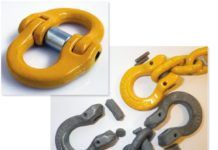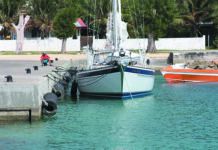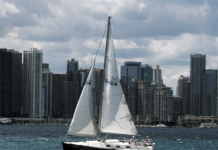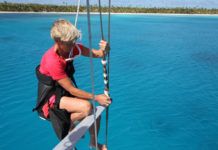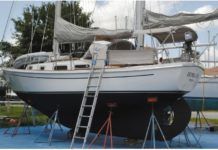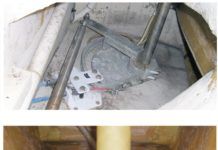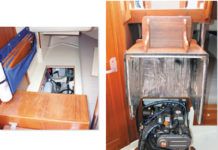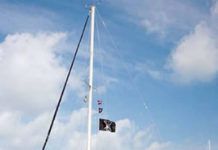Seaworthy and Solid Seawind II
The hull of the Seawind II is a solid lay-up. The deck and cabin trunk are balsa cored. The top of the coachroof, in the way of the deck-stepped mast, is cored with solid, filled epoxy for greater compression strength.
Mailport: Winterizing Hoses
In regard to PSs marine sanitation hose test report (PS April 2012): One of the issues we have run into is winterization. Several hose manufacturers state that their hose is not resistant to glycol-based antifreeze, which is what most winterization fluids use to depress the freezing point. After we ended up with a really bad stink, we read up on the hose manufacturers website and realized that our hose was not compatible with the fluid we had used. (This actually caused me to renew my subscription to Practical Sailor.) It would be good for your next articles Value Guide to include a column on winterization compatibility.
Heavy Glass Hull Marks Tayana 37 Boat
The hull of the Tayana 37 is a fairly heavy, solid-glass layup. Some roving print-through is evident in the topsides. In the past, the hull-to-deck joint has occasionally been a problem. There is no doubt it is strong, but there have been numerous reports of leaking.
PDQ: Rugged Quality
The PDQ 32 is laminated using a modified epoxy resin (AME 5000). Tri-axial knitted fiberglass fabrics are used in the hull and deck. The mast is supported by a carbon-fiber reinforced deck beam. The hulls are solid fiberglass below the waterline and cored with Klegecell foam above the waterline, an arrangement that has proven very durable. Owners have not reported problems with blisters or structural cracking, only limited gelcoat crazing in highly stressed corners. Another PDQ 32 we inspected showed numerous construction shortfalls, including delamination and poor resin wet out, so a thorough survey of any used boat is important.
Living Small on the Big Sea
Readers familiar with the work of William Crealock-the renowned designer of the Crealock 37, the Cabo Rico 34, the Dana 24, and at least 30 other production-built vessels-understand that his designs are steeped in practicality. Crealock famously wrote: Seaworthiness in a cruising boat has to be the No. 1 consideration. It doesn't matter how cute the boat is if it doesn't get [to the destination] in one piece. And those familiar with his life are aware that his knowledge of sailing wasnt just grounded in the study of design, but also in extensive hands-on experience at sea-an imperative for any designer of boats intended for offshore.
Hand Laid in the USA
Workers at Pacific Seacraft laminate these hulls by hand, using vinylester resin and layers of biaxial fiberglass laid at 45- and 90-degree axes for enhanced multidirectional strength. The decks are cored with balsa wood except for those areas where fasteners pierce through or fixtures are mounted; those spots are cored with either marine plywood, high-density foam, or solid fiberglass. The two-tone deck is accomplished by masking off the nonskid areas in the mold prior to gelcoat application. This yields a very durable surface.
Practical Sailor 2014 Index
Practical Sailor 2014 Index
Dissecting the CSY 37
Designed by Peter Schmitt, the CSY 37 is the mid-sized boat in the CSY line. Eighty-seven of these raised-deck cutters were built, primarily for the Caribbean bareboat charter trade. Schmitt has combined some features most often found in traditional boats-the oval stem, raised deck, and semi-clipper bow-with a relatively modern underbody featuring a fairly long fin keel and a skeg-mounted rudder. On paper, the boat looks pretty good. In person, she is rather tubby and high-sided, but that tubbiness means added buoyancy-not such a bad thing to have in a blow.
Heavy-duty Hull Gets High Praise
With more than three decades of hard use behind it-first in the charter trade and later in private ownership-the CSY 37 has very few secrets. All its warts are well exposed; as are its strengths. About two-dozen current and former owners responded to our survey, and we saw many consistencies in their comments. Most owners praised the boats rugged construction and stability and lamented its upwind performance. On the whole, the boat delivered what they expected of a cruising boat: namely a boat that would get them (and a fair amount of gear and provisions) safely and comfortably to their destination. Nearly all of the respondents had the owners version or B layout, and praised its livability. The following summaries and comments are representative of the majority of responses we collected.
Express 37 Nails Performance
Following graduation from California State Polytechnic University, naval architect Carl Schumacher spent four years working as an apprentice with Gary Mull before opening his own shop in Alameda, California, in 1977. He has since designed 37 boats ranging in size from one tonners to 50-foot world cruisers, participated in the design of the front-ruddered Americas Cup boat skippered by Tom Blackaller in the 1987 trials, and most recently designed the Alerion Express boats, which are being constructed at TPI Composites, Inc.











